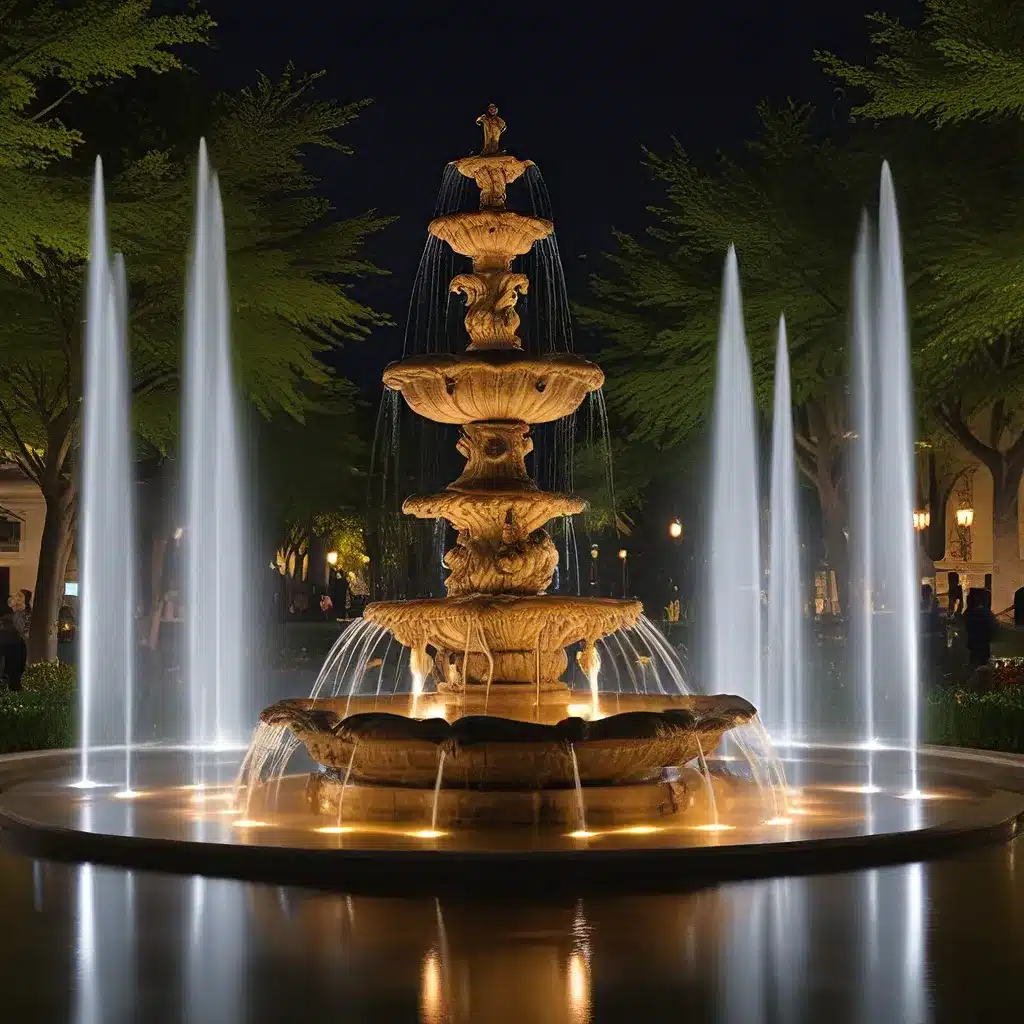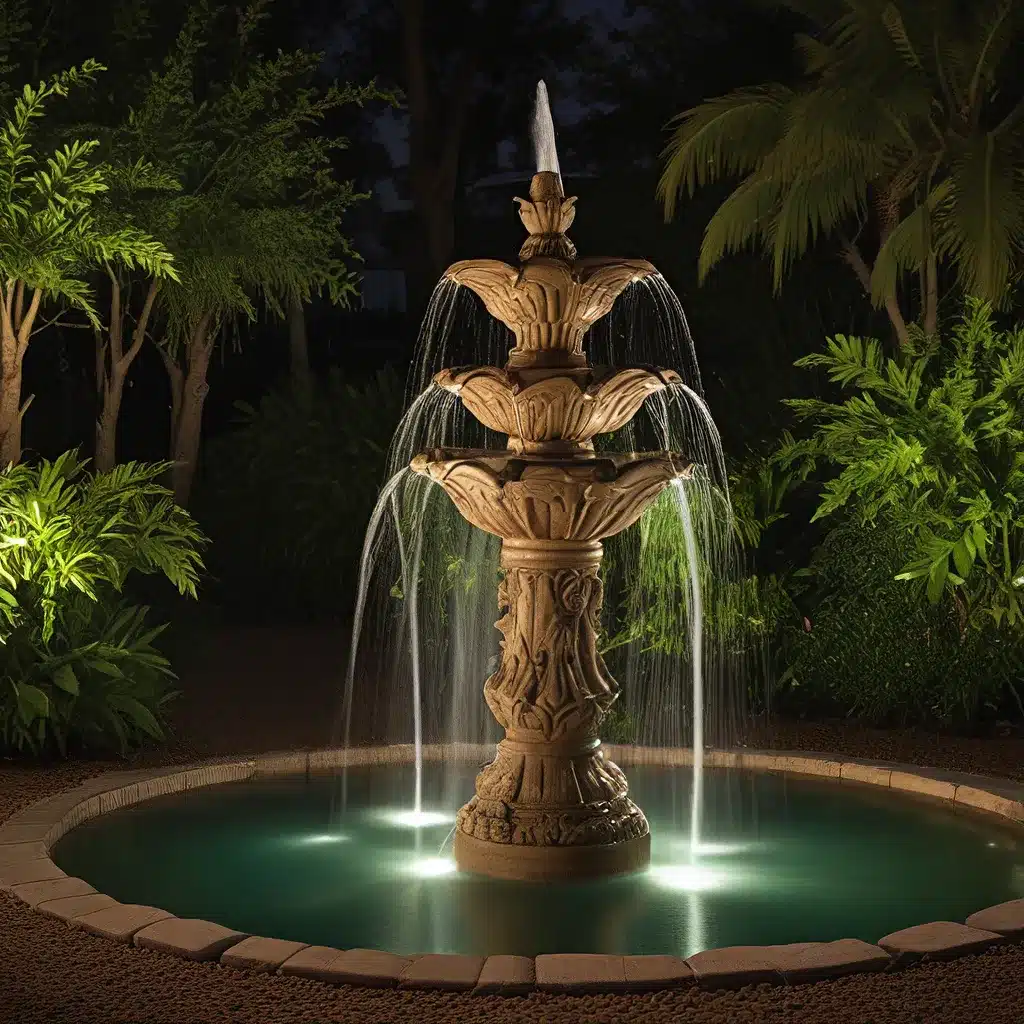
Fountain Design Essentials – Welcome to Fountain Lights
Fountain Design Essentials – Welcome to Fountain Lights

As someone who has spent years tinkering with fountain setups, I can tell you that finding the right water pump is crucial to creating a captivating and well-functioning display. Sure, the LED lights might grab all the attention, but without a reliable and high-performing pump, your fountain will be nothing more than a fancy ornament. In this article, I’ll dive deep into the world of fountain pumps, exploring the different types, their key specifications, and how to choose the perfect one for your backyard oasis.
When it comes to fountain pumps, there’s a lot more to consider than just the size or power output. The first thing you’ll need to wrap your head around is the concept of flow rate and lift height. Flow rate, measured in gallons per hour (GPH), determines how much water the pump can move. Lift height, on the other hand, is the maximum vertical distance the pump can push the water. These two specifications work hand-in-hand to determine the overall performance of the pump.
Now, you might be tempted to simply go for the pump with the highest flow rate, but that could end up being a costly mistake. See, if your fountain is set up with a tall, narrow design, you’ll need a pump with a higher lift height to push the water all the way up. Conversely, a wide, shallow fountain will do just fine with a pump that has a lower lift height but a higher flow rate. It’s all about finding that perfect balance.
When it comes to fountain pumps, there are a few main types to consider. Let’s break them down:
These are the most common type of fountain pumps, and for good reason. Submersible pumps are designed to be completely submerged in water, making them ideal for in-ground or even above-ground fountain setups. They’re typically quieter than their non-submersible counterparts and can handle the pressure of being submerged without any issues. Plus, they come in a wide range of sizes and flow rates to suit your specific needs.
If you’re working with a more complex fountain design or need to situate the pump further away from the water source, an external pump might be the way to go. These bad boys are installed outside of the water, often in a hidden compartment or equipment shed. They tend to be a bit louder than submersible pumps, but they offer greater flexibility in terms of placement and can handle larger, more demanding fountain setups.
For those who want the best of both worlds, inline pumps are a fantastic option. These pumps are plumbed directly into the water line, allowing them to operate outside of the water while still maintaining the efficiency and quietness of a submersible design. They’re perfect for larger, more intricate fountain systems where you need a powerful pump but don’t want it taking up valuable space in the water.
Now that you’ve got a solid understanding of the different pump types, it’s time to start thinking about the specific requirements of your fountain setup. As I mentioned earlier, flow rate and lift height are the two key factors to consider, but there are a few other important specs to keep in mind:
Power Consumption: Depending on your local electricity rates and the size of your fountain, the power consumption of the pump can have a significant impact on your energy bills. Look for energy-efficient models to save some cash in the long run.
Noise Level: Nobody wants a fountain that sounds like a jet engine, so pay attention to the decibel rating of any pumps you’re considering. Submersible and inline models are generally quieter than external pumps.
Durability: Fountain pumps take a beating, being exposed to the elements and running for hours on end. Look for models that are built to last, with corrosion-resistant materials and reliable motors.
Customization Options: Some fountain pumps come with adjustable flow controls or even built-in LED lighting, allowing you to fine-tune the look and performance of your display. If you want a more personalized setup, keep an eye out for these versatile features.
Once you’ve identified the key factors for your fountain, it’s time to start comparing specific pump models. I’d recommend checking out FountainLights.net – they’ve got a great selection of high-quality pumps and tons of helpful resources to guide you through the selection process.
Choosing the right pump for your fountain setup is a bit like solving a puzzle. You’ve got to consider the size and shape of your fountain, the desired water flow and height, and a whole host of other technical specifications. But trust me, it’s worth putting in the time and effort to get it right.
After all, a well-designed and properly powered fountain is a sight to behold. Imagine the captivating display of water cascading gracefully over the edges, illuminated by a dazzling array of colorful lights. It’s like a mesmerizing work of art, right in your own backyard.
So, don’t settle for a subpar pump that leaves your fountain sputtering and struggling. Take the time to do your research, understand the key factors, and find the perfect match for your aquatic masterpiece. Your guests will be amazed**, and you’ll have the satisfaction of knowing you did it right.
Share to :